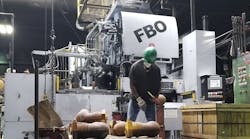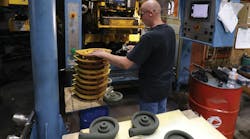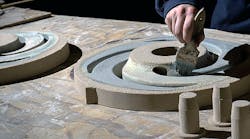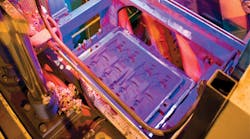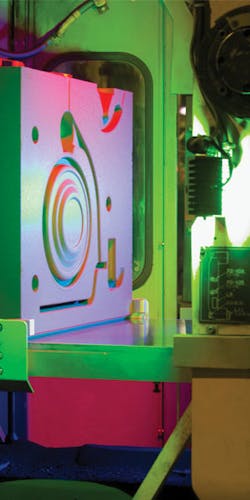Never mind the different alloys and sizes and types of castings. Never mind the different process technologies that various foundries and diecasters conduct. There are only a few objectives that all metalcasters share; quality control must be near the top of that list. When FM&T surveyed readers at the end of last year, 24.1% of all metalcasting respondents indicated metalcasting respondents indicated plans to invest in product testing and inspection systems during 2013. A similar percentage indicated such investment plans during the previous year, and testing and inspection equipment have remained a high priority of metalcasters’ improvement programs for most of the past decade.
Metalcasters are not uniquely inclined to prioritize quality control, but the nature of their work — data-driven design and production, process-oriented manufacturing, series production of engineered parts — creates numerous opportunities to deploy testing and measuring technology.
The wide adoption of advanced, laser-driven coordinate measurement technologies by metalcasters is one aspect of this trend. Another is the increase in the number of firms dedicated to developing and supplying quality control and analysis systems for metalcasting. This means that technology-based, data-driven quality control can be installed and operated side-by-side with manufacturing processes.
Consider Inspectomation, a company that develops inline systems for quality-assurance and product traceability. Its Core-Vision package inspects cores, core assemblies and molds during the manufacturing process, using vision-based systems and software that identifies and evaluates user-defined areas of interests on the product. The image of the mold or core is compared with reference images, and the record is captured for quality analysis and product traceability.
Current interfaces and field bus cables connect Core-Vision to the control unit of the production line. Operators can define individual defects to flag or even to stop production.
The Core-Vision system is one of several vision-based quality control packages that Inspectomation has developed. A version of it has been adapted to the particular demands of vertical molding machines, adding quality assurance to the high-throughput objectives of larger foundries.
Developers’ focus on in-line quality control has not taken any emphasis off standard laboratory systems. LECO Corp., which designs and supplies industrial instruments for elemental analysis, spectrometry, metallographic sampling and analysis, hardness testing, and more, delivered a long series of product improvements and developments recently.
For example, LECO’s new CS744 Series carbon/sulfur analyzer was developed for accurate, wide-range measurement of carbon and sulfur content of metals, ores, ceramics, and other inorganic materials. The design incorporates a variable-power combustion furnace, and an IR cell design with thermostatic construction protects the system from ambient temperature fluctuations, simultaneously detecting carbon and sulfur. A high-velocity vacuum contains dust and debris, and optional 10- and 60-sample autoloaders are available for maximum productivity.
Thermo Fisher Scientific introduced a new optical emission spectrometer: the iSpark OES is designed for precise and reliable, high-speed, high-throughput analysis. According to Thermo Fisher’s Dr. Ravi Yellepeddi: “Higher accuracy reduces raw materials waste and improves production quality by enabling metallurgists to confirm precise concentrations of elements, down to parts per million.”
Optical emission spectrometry, which analyzes the emitted light from spark excitation of a metallic sample, is one of the most reliable and accurate means for characterizing the composition of metals and alloys. ARL iSpark integrates the PMT and CCD detection technologies to provide high-performance analysis while maintaining versatility to cover a wide range of elements.
From the lab to the production line, metalcasters may not have much else in common, but the drive to increase throughput without sacrificing quality is standard.



